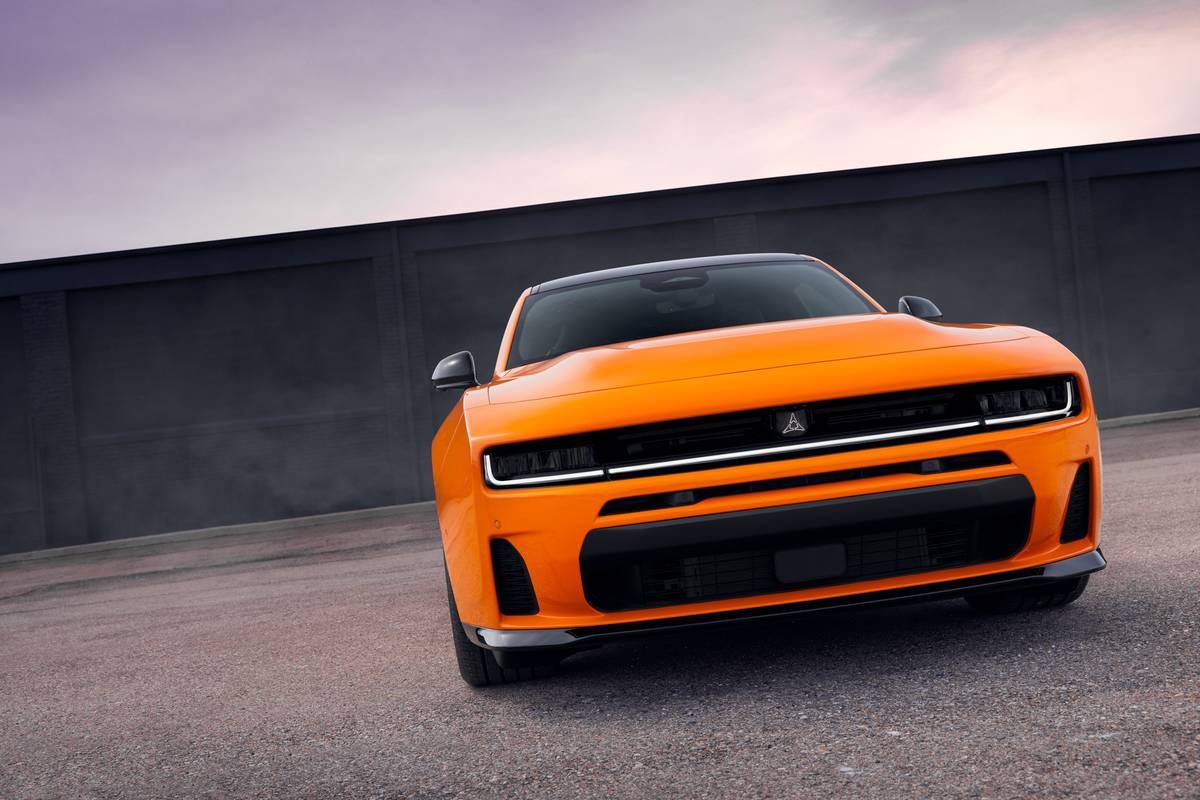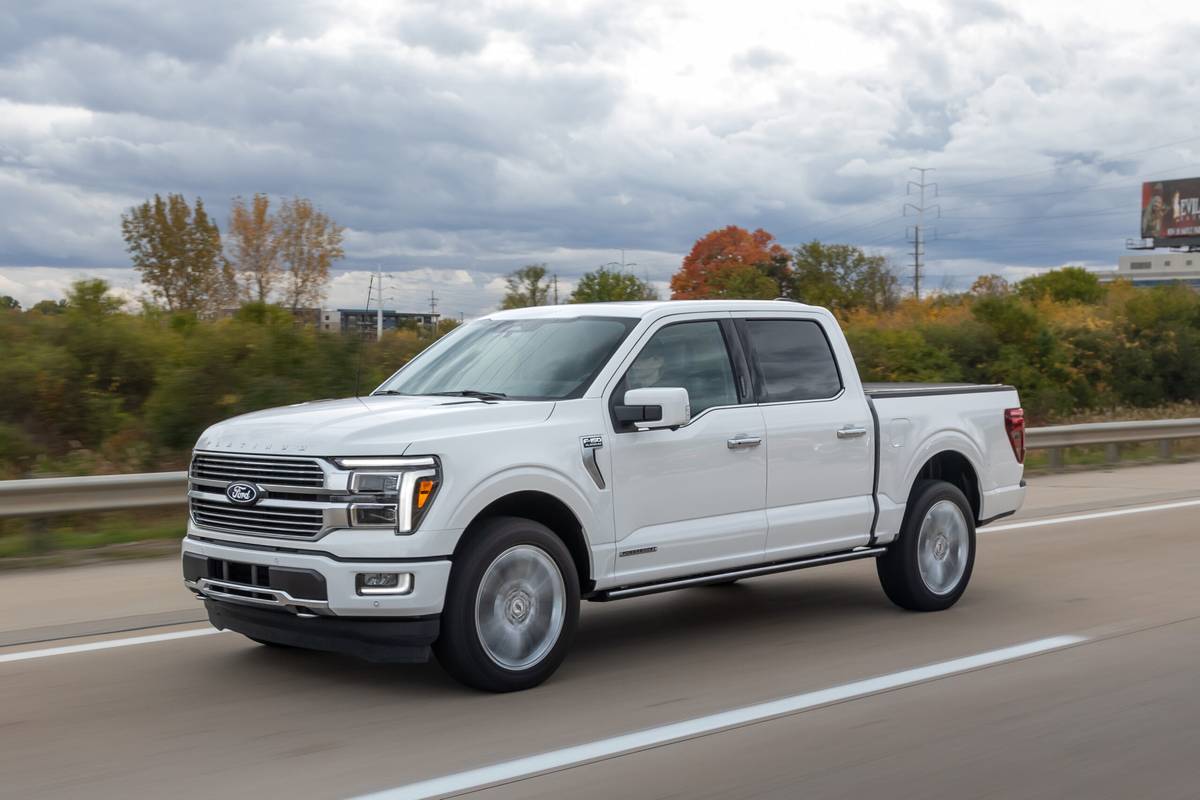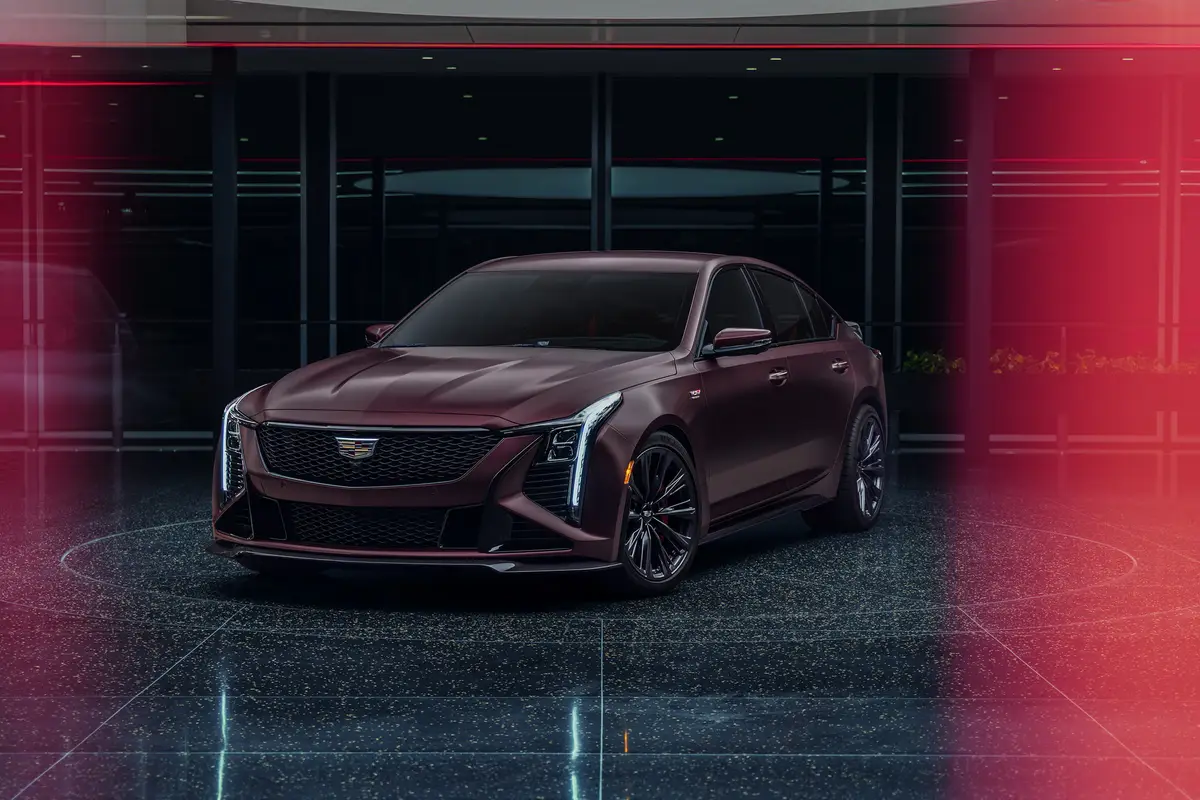Our view: 2011 Chrysler 300C

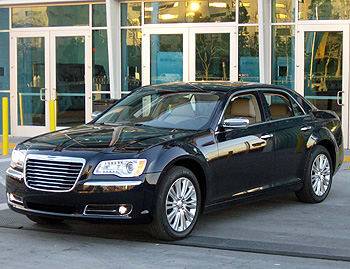
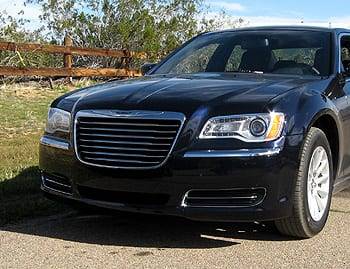
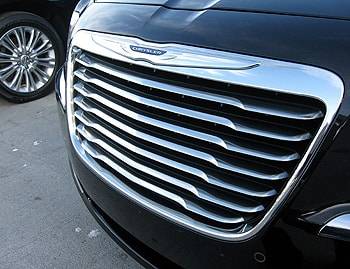
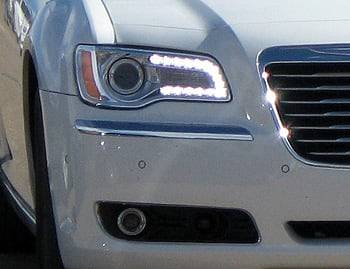
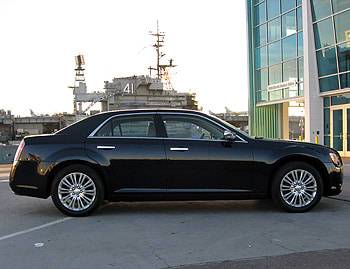
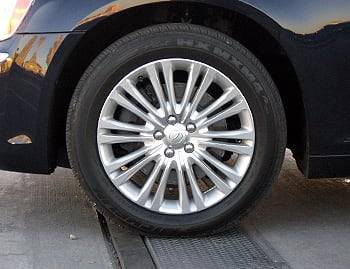
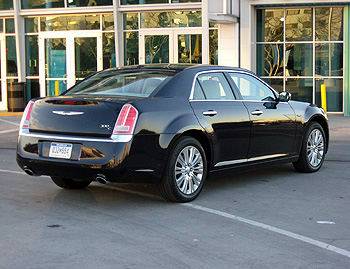
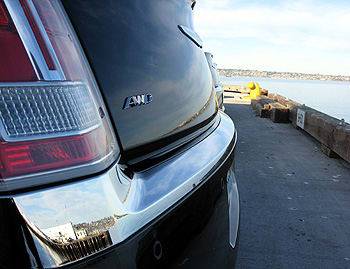
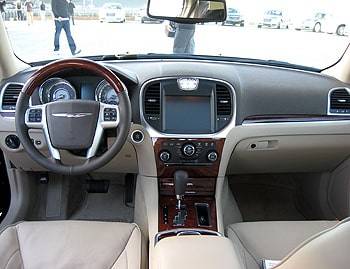
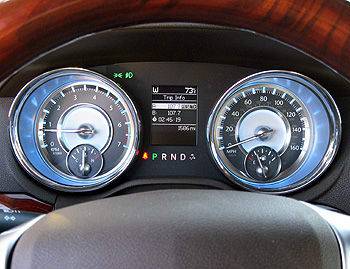
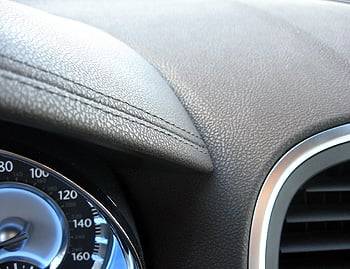

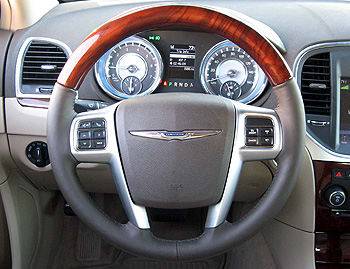
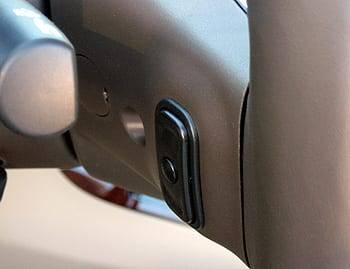
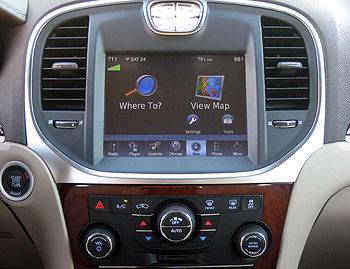
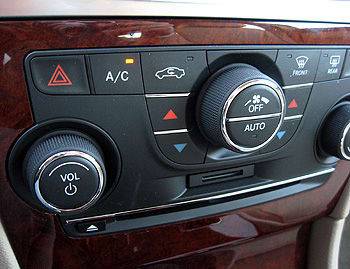
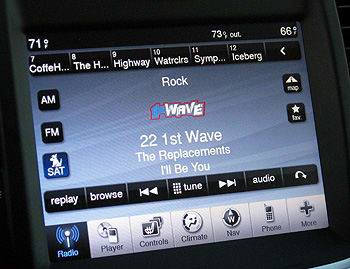
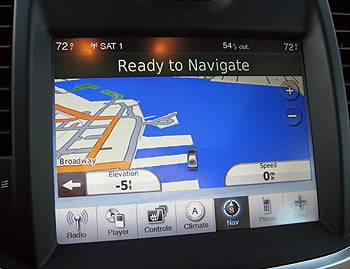
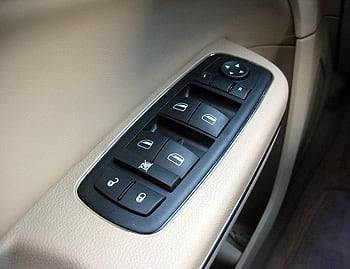
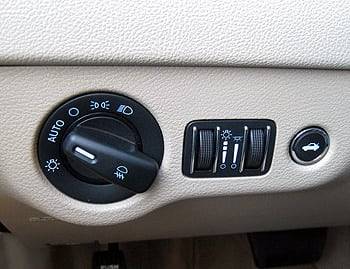
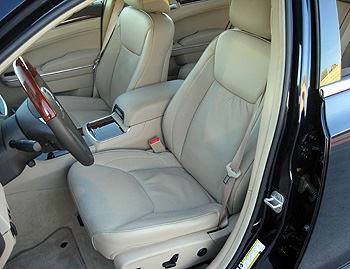
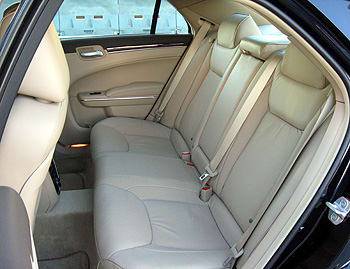

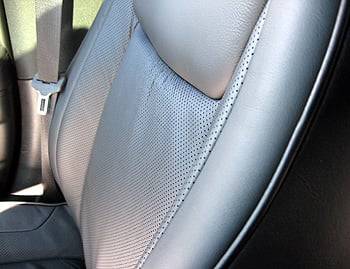
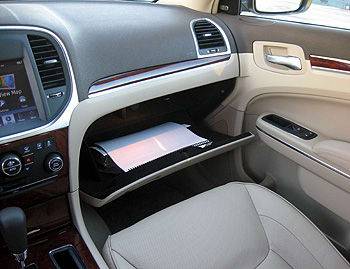
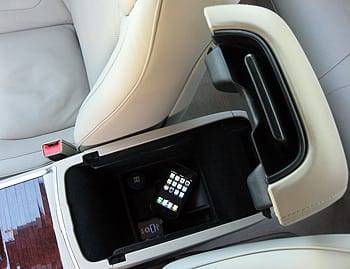

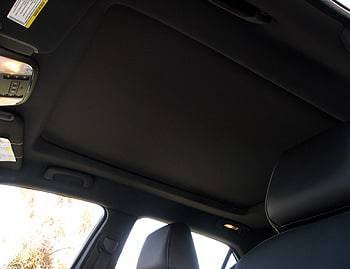
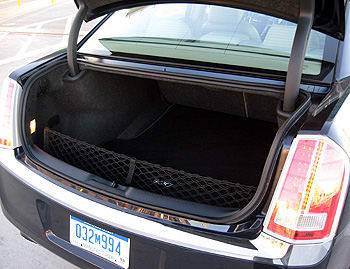
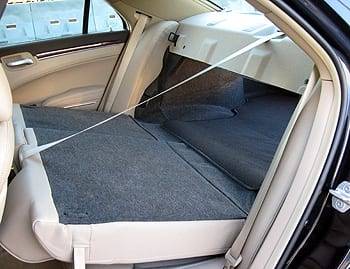
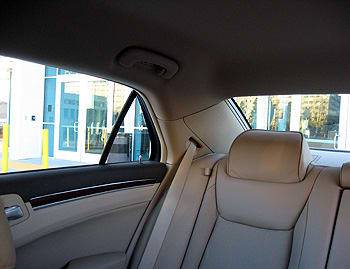
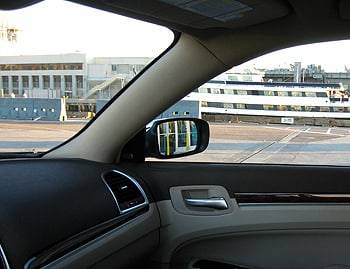
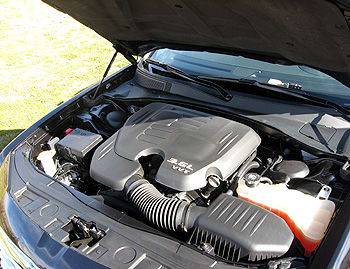
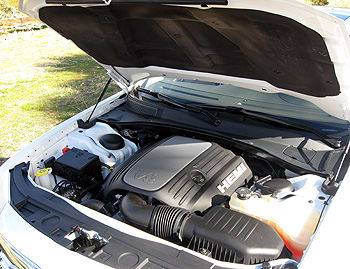
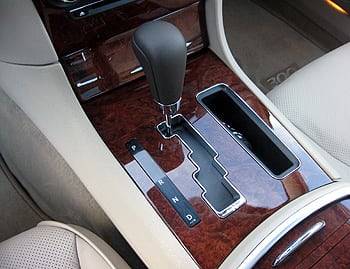
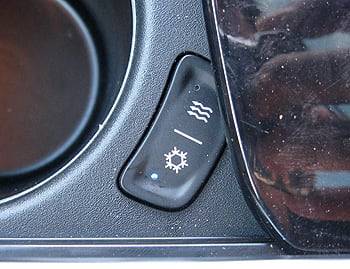




































The redesigned 2011 Chrysler 300 is not as distinctive as its predecessor, and it misses its target in a few areas, but overall it’s the best example yet that Chrysler is back on track.
The full-size sedan is appealing in its details — an area where Chrysler products have often come up short. More than simply a step in the right direction for the automaker, the 300 presents a compelling choice for anyone shopping full-size cars or entry-level luxury models.
Trims include the V-6-powered 300 and 300 Limited, as well as the V-8 300C. All-wheel drive is optional on the 300C. Compare them all here, or click here to compare the 2011 300 with the prior-generation model. At a media preview, I drove V-6 and V-8 versions.
LED the Way
The new 300 is a bit larger than its predecessor — about 2 inches longer and an inch wider — but has the same squared-off stance, tall grille and upright taillights. Most of the details have been updated: The headlights get standard C-shaped LED daytime running lights on their inboard corners, and the old 300’s waffle-and-mesh grille inserts have been replaced by seven slats. The slats, which have a three-dimensional profile and chrome finish up close, look upscale. Some may wish the mesh lived on, so Chrysler says it will offer the design through its Mopar aftermarket division.
The 300 looks upscale even in base trim, though one editor thought it looked over-accessorized. Chrome bars along the bumpers effectively mask the spot where fog lights would go on uplevel models. (The headlights themselves are halogen, with xenons optional.) Chrysler integrated the car’s standard dual tailpipes into the rear bumper, which leans forward into the trunklid. It’s a slick design, particularly in profile, though it looks like it might leave the protruding tailpipes more vulnerable to damage than they would be under a more substantial bumper.
The 300 Limited and 300C swap the 300’s standard 17-inch alloy wheels for 18s. Nineteen- and 20-inch rims are also optional.
Going & Stopping
Sporting Chrysler’s new Pentastar V-6 engine, the 300 moves out quickly enough, with stronger power as the tach needle winds to the right. I look forward to the automaker’s eight-speed automatic transmission, which will grace the V-6 by year’s end. The current transmission — a carryover five-speed auto — upshifts smoothly but can be stingy on downshifts, particularly on curvy roads. The EPA-estimated gas mileage for the V-6 is a so-so 21 mpg in combined city/highway driving. The eight-speed should improve on that.
I never took much issue with the old 300’s 3.5-liter V-6, which moved the car capably enough. Saddled with another 158 pounds, its 3.6-liter replacement doesn’t offer a world of difference, despite having substantially more power. The Ford Taurus feels about as quick; the Toyota Avalon is noticeably quicker.
Step up to the optional 5.7-liter Hemi V-8, and the five-speed is no quicker to downshift, but the engine erases much need for that. The drivetrain doesn’t pack the immediate punch I’ve come to expect from a Hemi, but power gets exhilarating once the revs build. Get on the gas hard, and the 363-horsepower drivetrain’s baritone pitch is one of the richer sounds this side of a supercar.
Both engines exhibit a moment of accelerator lag from a complete stop. It’s been an issue since the industry’s widespread adoption of electronic throttles, and the 300 and 300C exhibit it most noticeably around town, when you need a quick spurt to pull around a parked car.
Overall mileage drops to 19 mpg with the Hemi, or 18 mpg if you opt for all-wheel drive, too. Chrysler says the all-wheel-drive system employs a front-axle disconnect that keeps efficiency closer to that of two-wheel drive and transfers power to the front wheels when it detects wheelspin. I didn’t evaluate an all-wheel-drive 300, but if you drive one, consider scheduling your test drive during inclement weather. We evaluated an all-wheel-drive Dodge Charger last May that had the same system, and on wet roads it allowed the rear tires to spin far too long before routing power to the front ones. Modern all-wheel drive tends to provide traction all the time; in the quest for incrementally better fuel efficiency, Chrysler may have compromised just that.
Four-wheel-disc antilock brakes are standard, with larger discs and twin-piston calipers up front on the 300C. With either drivetrain, the pedal exhibits smooth, linear response and strong stopping power.
Ride & Handling
Ride quality — an aspect where the last 300 excelled — remains good in either trim level. The suspension soaks up bumps well, isolating the cabin most of the time. Alas, it’s no match for the car’s weight. The 300 feels less nose-heavy than much of its front-drive competition, but charge hard into a corner and it pitches off-balance, with mushy steering that inspires little confidence in negotiating the curve.
Fortunately, Chrysler packages the 300’s optional 20-inch wheels with a firmer, Touring suspension and 25 percent quicker steering. Indeed, the flatter cornering and sharper turn-in suit the car’s dynamics much better. It’s not quite as well-mannered as the Hyundai Genesis, but you’ll drive more confidently with this setup. The tradeoff comes in a firmer ride — it picks up more rhythm over bumpy pavement — and higher steering effort around parking lots, but I didn’t find either aspect objectionable.
The Inside
Cabin materials are good, with padding all the way down to knee level and richer finishes than Chrysler has been known for. The automaker’s new 8.4-inch UConnect touch-screen is a worthy centerpiece. Standard on all 300s, it boasts a fast-paced interface with excellent graphics and minimal lag between menus. Don’t bother to get the optional Garmin navigation system, whose slow map scrolling and clumsy icons feel at odds with the rest of the system even though the two interfaces inhabit the same screen.
Chrysler says the windows and windshield are 15 percent larger than the previous generation’s, and the windshield has been pulled back a few inches so you don’t have to lean forward to see stoplights. Visibility (or lack thereof) won’t be a deal-breaker, like it has been for some shoppers, but Chrysler hasn’t exactly turned it into a strength. The roof still hunkers low, and the belt line still rides high. The 300 is no longer quite a pillbox, but it hasn’t become a crow’s nest, either.
Nor is it a living room. The front seats boast impressive adjustment range and room to stretch out, but the backseat isn’t up to large-car snuff. By the numbers, backseat headroom and legroom are similar to the Avalon’s — but the Toyota, in part thanks to its standard reclining rear seats, feels a lot roomier. As backseats go, the 300 is closer to the Taurus. Its 16.3 cubic-foot trunk is a slight improvement from before, and it trumps the Toyota’s undersized compartment — but it falls short of Ford’s mammoth confines.
Safety, Features & Pricing
Well over half the new 300’s structure is made up of higher-strength steel than before, Chrysler says, and the results show. With top scores in front, side and rear impact crash tests, as well as a top roof-strength score, the car is rated a Top Safety Pick by the Insurance Institute for Highway Safety — a mark its predecessor failed to attain. As of this writing, the 2011 300 has not been tested by the National Highway Traffic Safety Administration. Standard features include a full complement of front and side airbags, active head restraints, antilock brakes and an electronic stability system. Click here for a full list. On the 300 Limited and 300C, an optional safety package includes adaptive headlights that swivel a few degrees in the direction of a turn, a blind spot warning system, and adaptive cruise control with forward collision warning.
Notable standard features on the $27,170 300 include an eight-way power driver’s seat with four-way power lumbar, keyless access with push-button start, dual-zone automatic climate control, the touch-screen center display and a USB/iPod-compatible stereo. If you can live with manual climate control, manual adjustments for the driver’s seat and conventional keyless entry, cars like the Taurus and the 300’s own Dodge Charger sibling can save you a couple thousand dollars. Conversely, the Avalon and Genesis start at more than $30,000 but come more lavishly equipped.
So, too, can the 300. Options include an eight-way power passenger seat — with the same four-way power lumbar — plus heated and cooled front seats, two grades of leather upholstery and two Alpine stereos. A panoramic moonroof, the navigation system, a backup camera, Bluetooth audio streaming, heated rear seats, a rear sunshade and a heated steering wheel are also optional.
All-wheel drive is available only on the V-8 300C, where it adds $2,150; Chrysler says the V-6 model will offer all-wheel drive once the eight-speed automatic arrives. Load up an all-wheel-drive 300C with factory options, and it tops out around $46,000.
Usually a concern for Chrysler, the old 300’s reliability was actually acceptable — not bad when you pit it against entry-luxury competitors like the Cadillac CTS and Lincoln MKS. Full-size non-luxury cars like the Taurus and Avalon, on the other hand, are a pretty reliable bunch. The 300 will need to improve upon its predecessor’s legacy to keep pace with the latter group.
300 in the Market
Full-size sedans occupy an interesting spot in the market. If you can take a big hit in cabin and trunk room, similar money buys an entry-level luxury car. It may not be lavishly optioned, but you’ll get a car cut from nicer cloth: better interior finishes, heavier-seeming doors, firmer controls. Or so the perception goes.
The reality, though, is that today’s full-size cars blur the lines astoundingly well. The Genesis and Avalon boast interiors worthy of any $35,000 luxury nameplate. So, too, does the 300, and that’s something I couldn’t say of its predecessor. Chrysler expects the flagship to be shopped against conventional full-size cars as well as entry-luxury models. If you’re considering either group, it deserves to be on your list. And that’s all good news for an automaker trying to claw its way back into the mainstream.
| Send Kelsey an email |

Former Assistant Managing Editor-News Kelsey Mays likes quality, reliability, safety and practicality. But he also likes a fair price.
Latest news
